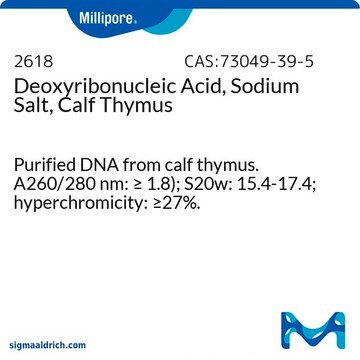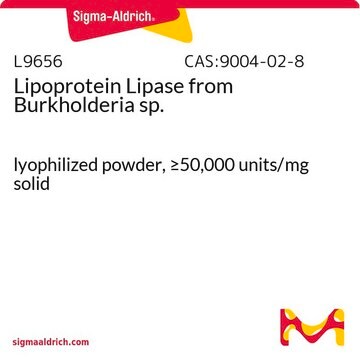T6632
Thymidine Phosphorylase, recombinant from Escherichia coli
recombinant, expressed in E. coli, buffered aqueous solution, ≥900 units/mL, 0.2 μm filtered
Synonym(s):
Thymidine:orthophosphate deoxy-D-ribosyltransferase
About This Item
Recommended Products
recombinant
expressed in E. coli
Quality Level
sterility
0.2 μm filtered
form
buffered aqueous solution
concentration
≥900 units/mL
UniProt accession no.
storage temp.
2-8°C
Gene Information
Escherichia coli K12 ... deoA(948901)
Looking for similar products? Visit Product Comparison Guide
General description
Application
Biochem/physiol Actions
Unit Definition
Physical form
Preparation Note
Storage Class
12 - Non Combustible Liquids
wgk_germany
WGK 2
flash_point_f
Not applicable
flash_point_c
Not applicable
ppe
Eyeshields, Gloves, multi-purpose combination respirator cartridge (US)
Certificates of Analysis (COA)
Search for Certificates of Analysis (COA) by entering the products Lot/Batch Number. Lot and Batch Numbers can be found on a product’s label following the words ‘Lot’ or ‘Batch’.
Already Own This Product?
Find documentation for the products that you have recently purchased in the Document Library.
Our team of scientists has experience in all areas of research including Life Science, Material Science, Chemical Synthesis, Chromatography, Analytical and many others.
Contact Technical Service







